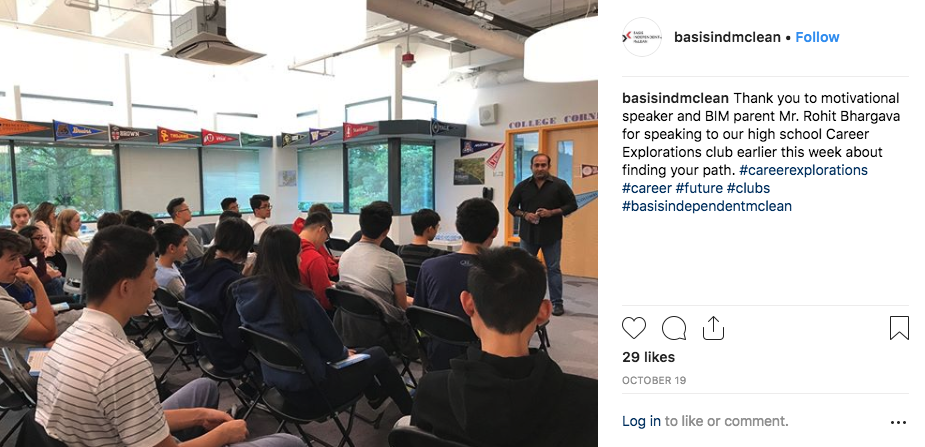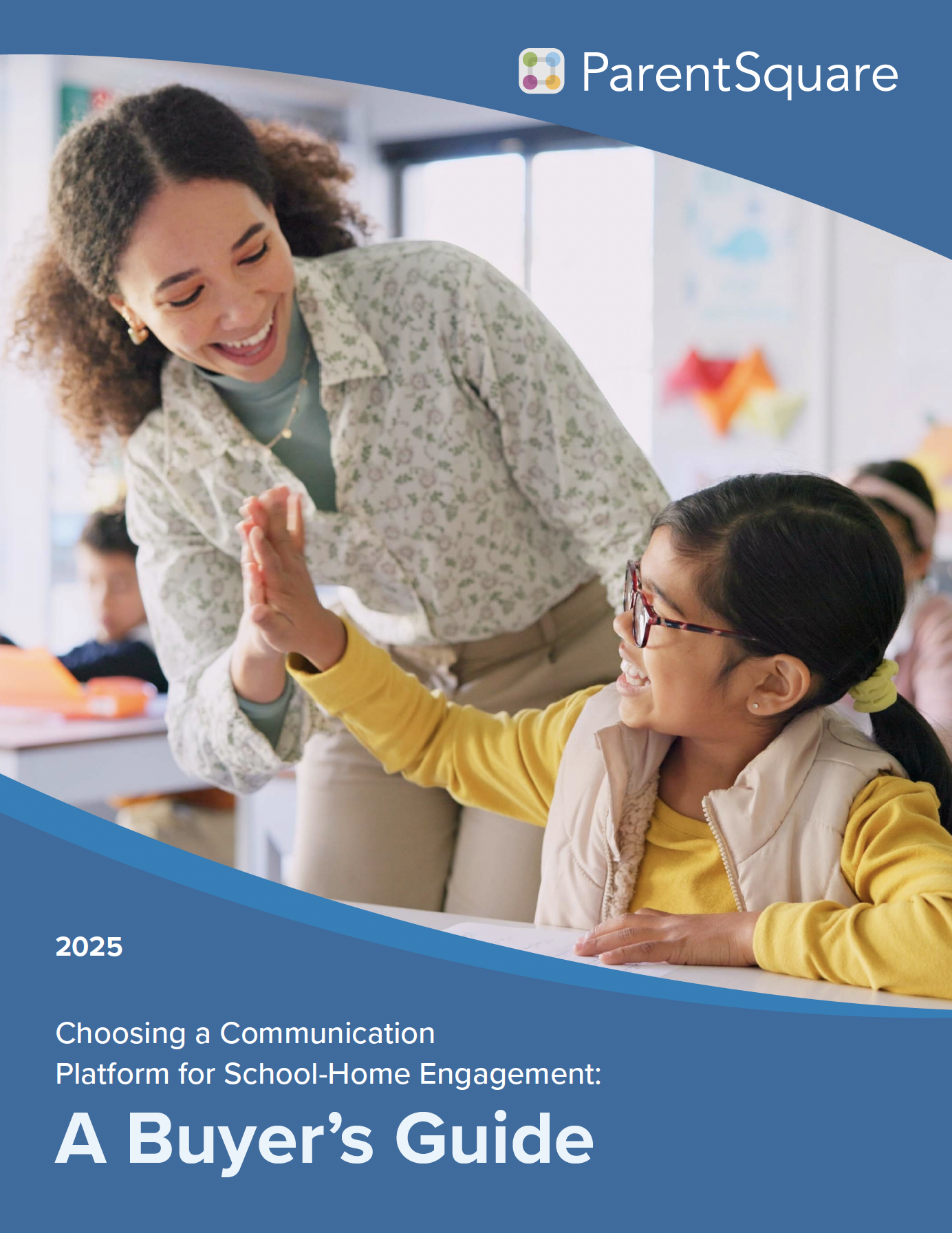Written by Zareena Zaidi
Take a moment to think about the community at your school. How inclusive is it? Does it encompass all of your school staff and students? Does it also include all of your parents — or just those who reach out and make a big effort to be involved? Do parents interact with each other? Do they feel connected to the school?
Schools with high parent involvement and a strong school community have a shared understanding of needs and values, driving a more positive school climate that has a lasting impact on student success and overall staff satisfaction.
Hosting parent-teacher conferences and Back-to-School nights are a great starting point for parent engagement. However, in order to truly foster a thriving and involved community, you must consciously promote a culture of parent engagement and put strategies and systems in place to safeguard it. School community is about establishing two-way connection between schools and parents. It’s about building trusted relationships, giving parents a sense of belonging to the school, and cultivating the feeling that the school and all its stakeholders are one big family.

1. “All Hands” Communication
Empower all staff members — administrators, office staff and teachers — to communicate directly with parents. When people from all levels of the school system personally interact with parents, they will feel connected to the school or district as a whole, rather than their child’s particular classroom. This also adds humanity to the seemingly big impersonal school — parents feel more personally attached if they see a human behind the communication!
2. No Parent Left Behind
It’s important to make sure you are reaching and communicating with at least one parent or guardian from every family, regardless of socioeconomic status and language barriers.
Try to reach parents where they are, in the language they prefer, and if possible — at the time they want. If your parent community doesn’t read emails, sending a long email newsletter is not effective. Instead, you may want to try shorter, more timely messages via text or app.
Aim to reach 100% of your families in the way they prefer. At Back-To-School night and Parent-Teacher Conferences, ask parents if they are receiving communication from school. If they aren’t, correct their contact information in the school’s records.


3. Interact With Parents IRL
Face-to-face interaction is priceless for fostering empathy and a sense of belonging, so make sure to meet and talk with parents In Real Life! Parents will feel more comfortable reaching out to the school and will know that their participation is welcome.
If possible, conduct “home-visits” with new families (especially kindergarten parents!) to show your effort in getting to know them. This effort makes parents feel that you care — about them and their kids. Showing that you care is vital to cultivating a strong community. It lays a foundation of appreciation and trust, which are core pillars in sustaining a strong community.
Each week, give teachers the time to call one family to share a positive update about their kid, as well as personally invite them to any upcoming school events. In middle & high school this can be a bit more challenging. Start by splitting students into different groups, perhaps by period. Then assign one teacher to each group, and have teachers call just the families of their respective groups.

4. Host Events With an Informal Spin
Hosting events is a super powerful tool — not only do you show your face and strengthen the school’s relationship with each parent, but you provide a space for parents to network, bond with each other, and build a sense of community centered around the school and their kids.
Events with a more informal spin might include themed events, such as: a Harvest Carnival, a Hot Chocolate Holiday Sing, Grandparents Day, International Day, a staff vs. parents dodgeball tournament, a celebration of other cultures’ holidays (such as the Dia de los Muertos celebration at Monterey Peninsula Unified School District’s MLK School of the Arts) and more!
5. Target Your Events
Parents want to go to events that are relevant to them and their kids. Remember when you are hosting an event that for most parents, the draw of an event is to meet the staff or other families, or to learn about something that is relevant to their child. The better you facilitate this, the more successful your event will be.
6. Make Time for Mingling
Encourage parent mingling by carving out time dedicated specifically for networking whenever you can. If you have many parents in one place — take advantage! Networking between parents is a great asset in building school community. Each parent can have a direct relationship with their school, but their connection and relationships with other parents are an essential factor in cultivating a sense of community.
Target events to bring together parents around a common interest, for instance: sports teams, art programs, pursuing arts colleges, etc.
7. Provide Plenty of Direct Opportunities for Parents To Be Involved

Rather than passively sitting back and waiting for parents to involve themselves, make sure parents feel welcome and empowered to participate! Broadcast when help is needed and provide plenty of direct opportunities for parents to be involved.
Many parents want to be involved and see how their kids interact. However, they may not know how to help teachers, or if their help and participation is even wanted. Furthermore, new parents often don’t know what is customary at the school or how to reach out. That’s why it’s so crucial to establish a warm and inviting atmosphere, and to keep parents in the know by providing specific opportunities and tasks that parents can help with.
For High Schools: Large student populations and independent (& sometimes angsty) teens make it tricky for high schools to involve parents. Try having parents help the school outside of the classroom — as lunch cart volunteers or school dance chaperones. Also invite parents to help in (often underfunded) extracurricular activities — this way parents can also be involved in something their kid is passionate about, and they can see their kid interact with others at school.
8. Be Present — Cheer the Kids On!
Make yourself seen and support your kids by being present at as many events as possible. When you are visible, you become more approachable and trustworthy — to both students and parents. It once again shows that you care, which is so vital to weaving a tight-knit community. This is especially true for new administrators, as being present builds rapport and makes people familiar with your face and comfortable with your presence.
Interact with students and parents in a casual way. Every now and then, serve students in the cafeteria or open doors at morning drop off. As an administrator, you help set the tone and culture at your school. Showing your face and making yourself available for student & family interaction will go a long way in setting a trusting, welcoming environment at your school.
9. Make Parents Your Super Sidekick

Extend the learning day by providing parents with tools to continue the conversation of their kids’ education at home. Direct two-way communication is great because 1) parents feel like their voice is being heard 2) You better understand your parent population and can tailor their involvement based on their situation. When parents feel like their voice is heard, they will be more invested. When the parents are invested, it sends a subconscious message to students that school is important and should be taken seriously.
Even though parents may not be able to make it to a school meeting, they can greatly impact their child’s learning and attitude towards learning by the way they approach school at home. Always remind parents that they can have a great positive impact on their child’s education, and empower them with the tools and attitude they need to do so.
10. Support Your Parent Organization
Show your PTA love as it’s a huge gateway into the parent population and thus critical to forming a strong school community. Your PTA is your go-to-panel for everything parents. They perform the same functions as your school’s leadership, but from the parents’ point of view.
By empowering your PTA to communicate directly with all parents and hold social events, you foster trust towards school and cultivate positive parent-school relations. It’s a way to easily scale up your community-building efforts.
11. Get All Staff on the Same Page
Include “community-building” and parent engagement in your school’s core values and reiterate it to your staff members in every meeting. Make sure there is solid, open communication between all staff and establish common goals to work towards. Shared goals and core values help shape individual interactions, which help shape school culture.
Host quick weekly meetings with all staff to open up an inclusive space to communicate issues and establish shared goals. Encourage everyone to discuss their progress towards the school’s goals, or thoughts regarding the core values.
Santa Barbara Unified School District decided to provide a space for principals who don’t usually see or interact the chance to meet in person and open a conduit for communication, improving a sense of community across the district.

12. Put Yourself in Parents’ Shoes. Often.
Provide quality service by always keeping in mind who you serve (the students & by extension their parents) and placing yourself in their shoes. Make sure you establish a “Families First” culture that truly welcomes parents. Your school’s culture has a massive influence on the interactions between staff, parents, and all stakeholders in the kids’ education.
When making important decisions, think about it from a parent’s perspective — how will this impact them and their child?
13. Make the Front Office About the Kids
You’re all there for the kids. The parents are there for their kid(s), the school and all its staff are there for the kids, and your front office should reflect that.


14. Include Parents in the Decision-Making Process
Make sure parents are able to voice their opinion and share their ideas. When they feel they can make an impact, they will be more involved and engaged and will be personally attached to the school. Involving parents adds a valuable perspective to your decision-making process, by bringing in multiple perspectives, you’ll likely make decisions that benefit the kids and put new ideas into place that future parents-to-be will probably be more on board for.

15. Let Parents Do Your Marketing
Parents trust other parents, so take advantage and give parents a platform to share how much they love your school (and why!). Not only could it entice other parents to potentially move their kids to your school, but it helps build rapport among the parents already at your school, and it constantly reminds your community why your school rocks! Once parents hear why other parents love your school, it may inspire them to share as well, or at least think about why they appreciate your school.
Include parent testimonials in various marketing areas such as your website or newsletters.
16. Are Your Efforts Working?
When you track and measure parent engagement, you not only fulfill LCAP/state requirements, but you are able to see what is and isn’t working, and from there you can work to improve your outreach and engagement. Also, when you ask parents (and perhaps students) for their feedback, they feel that you value their opinion, which builds trust and appreciation.
Look at reports provided by your communication platform to see how your community is engaing with the information provided.
17. Build Relationships With Local Businesses & Non-Profits
When you involve the greater community, you widen your school’s community past the staff, students and parents into the community at large. You also gain local advocates for your school.
One district bridged the homework gap by collaborating with local cafes, bookstores, and other businesses to allow students to use their wifi for free.

Incorporating the local community not only benefits students as in the example above, but can also bring the greater community together around a common cause, and build a sense of rapport for the school within your city, like in the case below. Compton Unified’s Centennial High School “Walk For A Cure” event is one of the largest in the Compton community, and they even got a City Council member to promote and cohost it!

All these tips may seem overwhelming, but take it piece by piece. See which tips are most relevant to your situation, or use these as inspiration for new ideas! Implementing just one new strategy can help cultivate your school’s community little by little. Just remember to be persistent and always show parents that you care!







